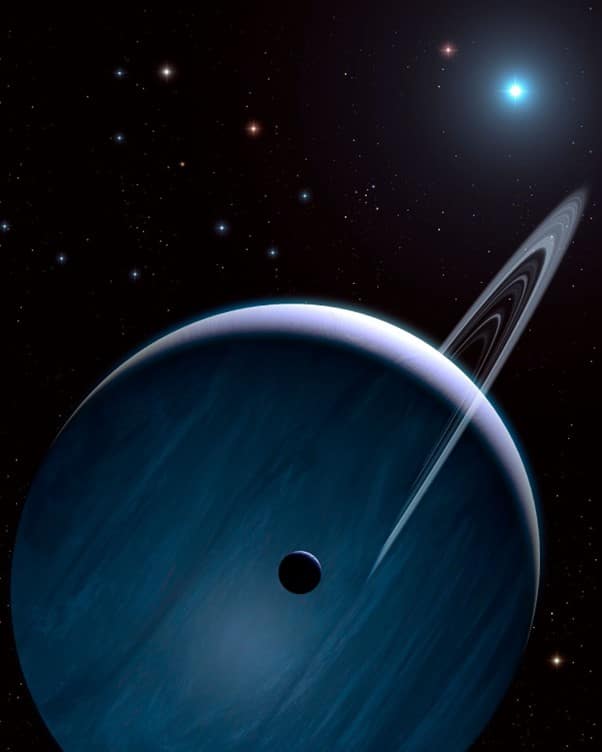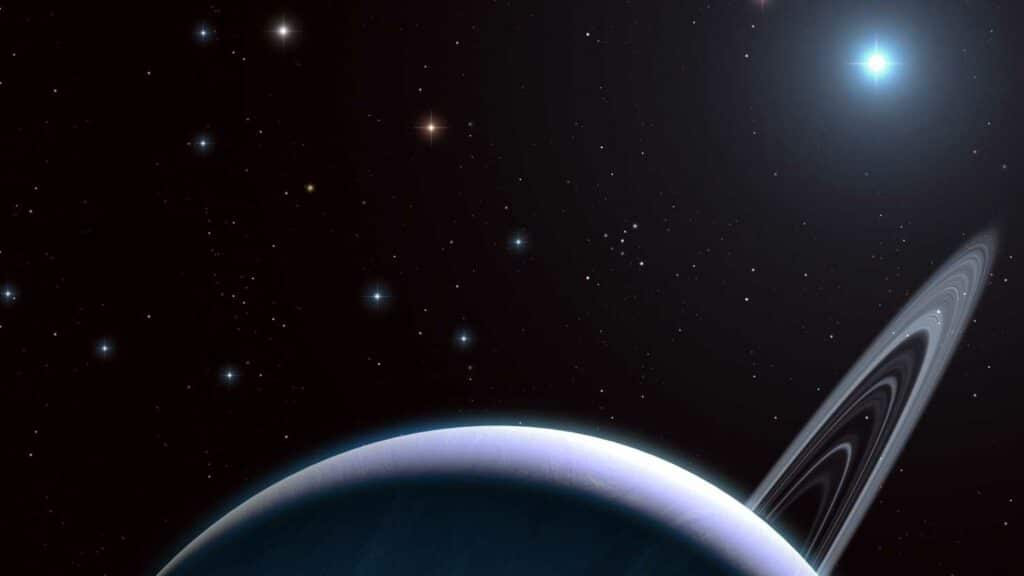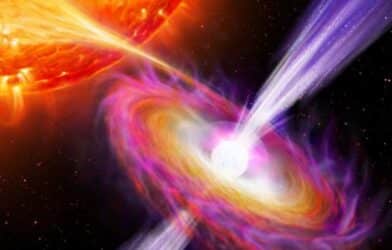Enormous worlds can be stolen from stars in “planetary heists,” according to new research. Nicknamed “BEASTies,” they are captured as they float through space, say British astronomers.
The phenomenon sheds light on a trio in strange orbits around “b-type” stars. They are extremely hot, luminous and blue — and over three times as big as our sun. The gas giants are likely to have been stolen from other stars or captured from deep space. They were identified earlier this year by a survey called the B-star Exoplanet Abundance Study (BEAST).
“Our previous research has shown that in stellar nurseries stars can steal planets from other stars, or capture what we call ‘free-floating’ planets,'” explains study co-author Dr. Emma Daffern-Powell, from the University of Sheffield’s Department of Physics and Astronomy, in a statement. “We know that massive stars have more influence in these nurseries than Sun-like stars, and we found that these massive stars can capture or steal planets – which we call ‘BEASTies’.
“Essentially, this is a planetary heist,” Daffern-Powell continues. “We used computer simulations to show the theft or capture of these BEASTies occurs on average once in the first 10 million years of the evolution of a star-forming region.”
In theory, planets can form around these stars. But large amounts of ultraviolet radiation would stop them reaching the size of Jupiter, the largest planet in our solar system.

The University of Sheffield study proposes a novel idea. Instead, BEASTies can be acquired. They are large distances from the host star, hundreds of times further than Earth to the Sun.
“The BEAST planets are a new addition to the myriad of exoplanetary systems,” says co-author Dr. Richard Parker. “They display incredible diversity, from planetary systems around Sun-like stars that are very different to our Solar System, to planets orbiting evolved or dead stars.”
More than 5,000 exoplanets — worlds outside the solar system — have been discovered to date, out of billions in our galaxy alone.
“The BEAST collaboration has discovered at least two super-Jovian planets orbiting massive stars,” adds Parker. “Whilst planets can form around massive stars, it is hard to envisage gas giant planets like Jupiter and Saturn being able to form in such hostile environments, where radiation from the stars can evaporate the planets before they fully form.
“However, our simulations show that these planets can be captured or stolen, on orbits very similar to those observed for the BEASTies,” he adds. “Our results lend further credence to the idea that planets on more distant orbits – more than 100 times the distance from Earth to Sun – may not be orbiting their parent star.”
The research is part of a larger program which aims to establish how common planetary systems like our own are in the context of the many thousands of other planetary systems in the Milky Way.
The study is published in Monthly Notices of the Royal Astronomical Society.
Report by South West News Service writer Mark Waghorn










-392x250.png)

